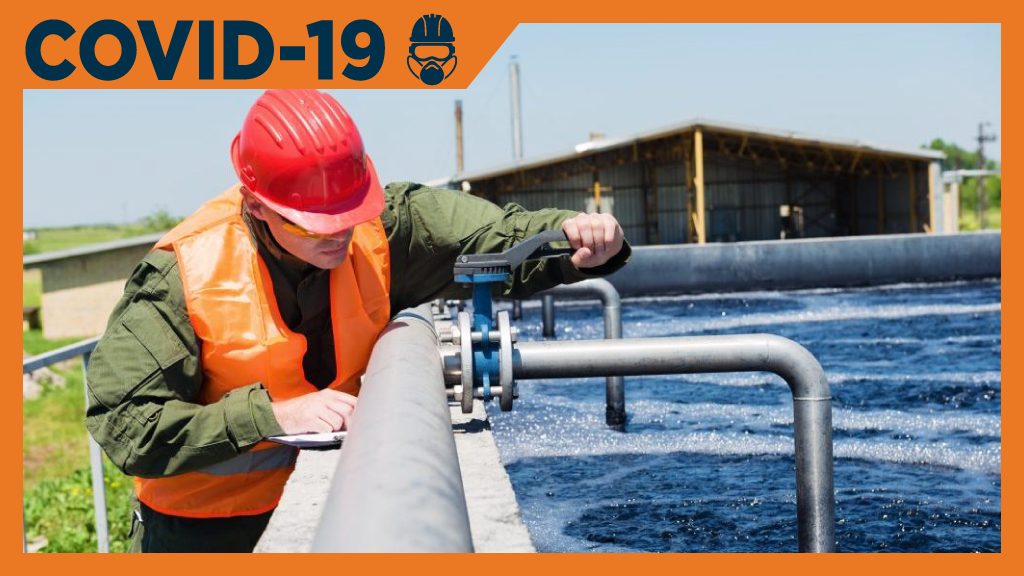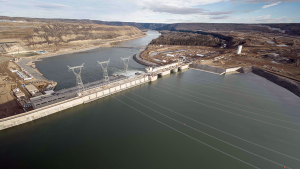Like the rest of us, Canadian water and wastewater organizations are having to adjust to COVID-19 as the pandemic continues to impact the country.
For example, the Regional District of Okanagan-Similkameen (RDOS) in southern British Columbia asked its residents recently to not flush sanitizing wipes down the toilet or pour fats, oil and grease (known as FOG) down the drain.
“In this challenging time, when we are spending more time at home, as we do our part, we must be conscious that our homes have to function,” said Rina Seppen, RDOS wastewater utilities foreman in an announcement. “The last thing we need is to have the sewer lines clog and essential services stretched as we work to serve the public needs.”
The Canadian Water and Wastewater Association (CWWA), for its part, is telling Canadians they can prevent sewage backups by not treating their toilets like garbage cans.
“At a time, when we are being quarantined or self-isolated at home due to COVID-19, nobody wants a situation that would force you out of your home,” said CWWA executive director Robert Haller.
The CWWA, which is the national professional association for leaders in municipal water and wastewater, is telling anyone who will listen to not flush anything but the 3Ps – pee, poop and toilet paper – down their toilets.
“Municipal sewer systems and private septic systems were designed to handle the 3Ps only,” said Haller. “Nothing else has ever been approved by the wastewater sector to be flushed.”
Anything else that is put down toilets or sinks causes problems that lead to clogs, blockages and wastewater equipment damage.
And that could lead to sewer systems getting shut down and raw sewage backing up into homes and flowing into rivers and lakes.
Haller said the problem got much worse several years ago with the introduction of so-called flushable wipes.
“These products were never tested or approved by wastewater professionals before labeling and marketing,” he said. “Items labelled flushable were then placed on shelves next to wipes labelled disposable or bio-degradable.”
Haller said the CWWA worked with the products’ manufacturers association to develop standards, but the manufacturers wouldn’t agree to the association’s requirements for the dispersibility of wipes.
“We agreed on the need for clear labelling, but the manufacturers responded with small ‘do not flush’ messages hidden on the bottom of a package or even under flaps,” said Haller.
The CWWA has been working for years with organizations like the Municipal Enforcement Sewer Use Group, a group of municipal professionals who work to educate the public on the right way to use the Canadian sewer system, to get the word out about the 3Ps.
COVID-19 has made its message particularly relevant today.
The CWWA said some people who have been unable to obtain toilet paper have been buying other products that shouldn’t be flushed.
“We are seeing greater use of paper towels and sanitizing wipes for kitchen and bathroom counters and cleaning toilets, but they’re being flushed,” said Haller. “We are even seeing rubber gloves and masks being flushed, which I attribute to an increased fear of germs and a desire to get them out of the house quickly.”
The City of Brandon in western Manitoba is taking no chances that COVID-19 could interrupt the supply of safe drinking water to its 50,000 residents.
Nine workers are sequestered at the city’s water treatment facility, to ensure Brandon’s water keeps flowing during the current crisis.
Mayor Rick Chrest said the move is part of the city’s pandemic preparedness plan.
Operating the water treatment plant is an essential service and the city wants to reduce the risk of the operators getting infected with COVID-19.
Patrick Pulak, Brandon’s general manager of development services, said five operators and four maintenance staff will sleep in three trailers that are parked at the rear of the water treatment facility in an area that is surrounded by a fence.
The workers will eat in the facility’s fully-equipped lunchroom.
“The staff were sequestered on March 26,” said Pulak. “They are there 24 hours a day, seven days a week. The plan is to keep them there for up to 28 days.”
A second shift of operators and maintenance staff, if one is needed, will take over on April 23.
Pulak said that, as of early April, Brandon is the only Canadian municipality that has sequestered its utility operators.











Recent Comments